Light + Building has been and gone, the axis about which the lighting industry turns. For those who are not familiar with it, Light + Building is a biennial lighting exhibition in Frankfurt, Germany. The lighting world gathers together, from the huge multinationals taking over entire halls to small niche companies doing specialist products. It is gargantuan in scale; for the week that it runs it would be almost impossible to see every stand at the show. It also has real character with the different halls; from hall 1 with it's trendy high end designer lighting to hall 10 with the Asian manufacturers and all the stereotypes and judgement that would be attached to that.
A stand with examples of both plant lighting and light fittings highlighting the structure
As a lighting designer I attend L+B to keep abreast of all the new products been launched and see what is out there. It is one of the best chances to see everything in one place, ask questions and discover new products. Here are some of the highlights from the show for me and the trends that I picked up on. It is in no way exhaustive, but should give a snapshot of the show.
LEDs are THE light source
While it is seen as inevitable for a long time. LEDs truly have become THE light source of the lighting industry. While their remains a place for specialist lamps of other types, LEDs where what almost all manufacturers were displaying to the exclusion of all else. Even the resurgence of the carbon filament lamp is been turned into an LED lamp (and about time, they are just so grossly inefficient).
LED form coming into its own
Industrial style modular LED structure with both direct and indirect light, as well as spotlights.
Many lamented that when LEDs first started been used they were just placed in products designed for different lamps. Rows of LEDs placed behind CAT 5 louvres (an outdated design in itself) and fixed into wall lights designed for R7s halogen strips. LEDs require both different light control from their fittings (optics) and also allow different forms due to their tiny stature. This year one of the elements that set the designer and high end market apart from the middle market was the form their fittings are taking. Manufacturers are really embracing LEDs and the fact that almost impossible designs can now be realized. here are a few examples of what has been created.
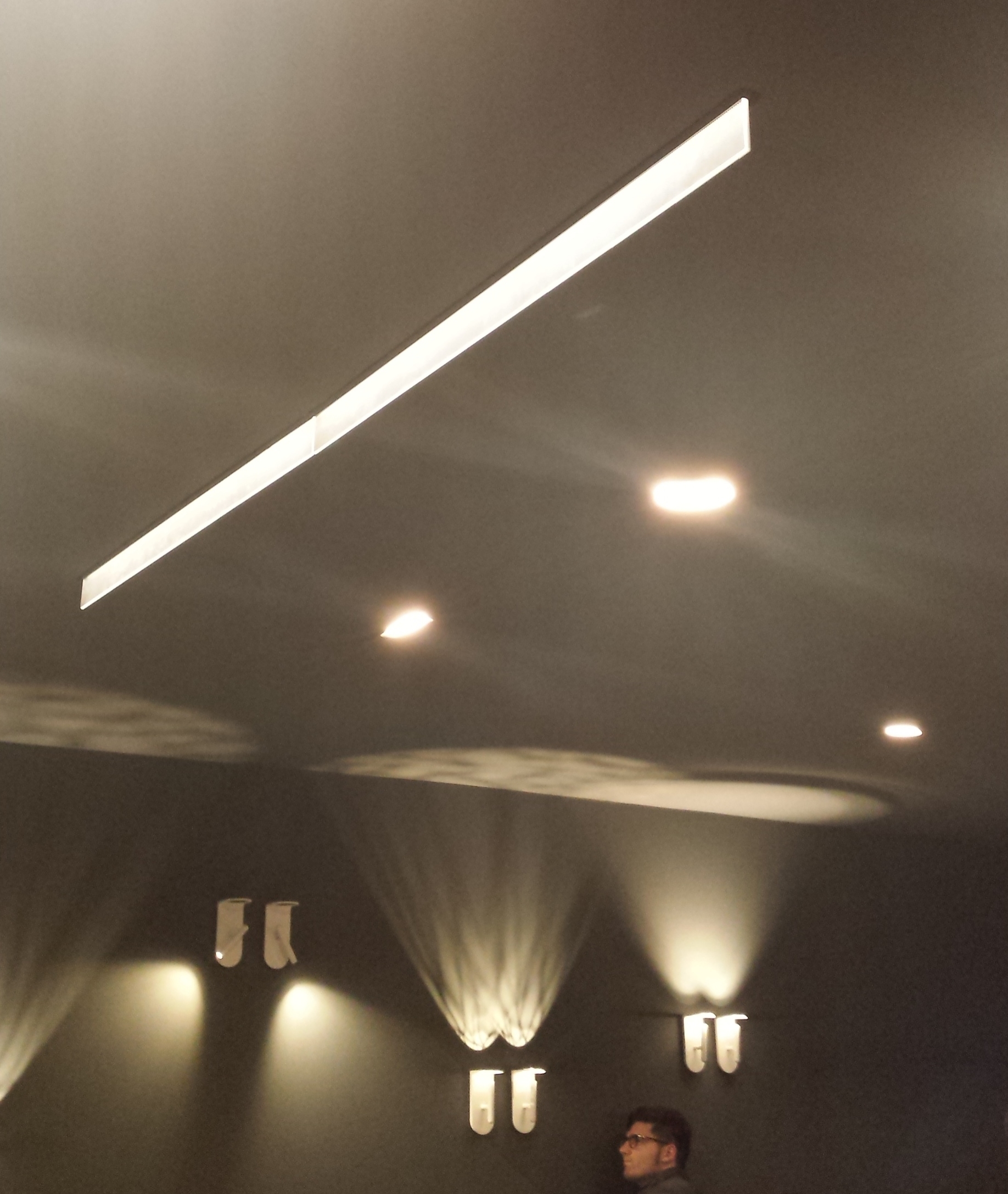
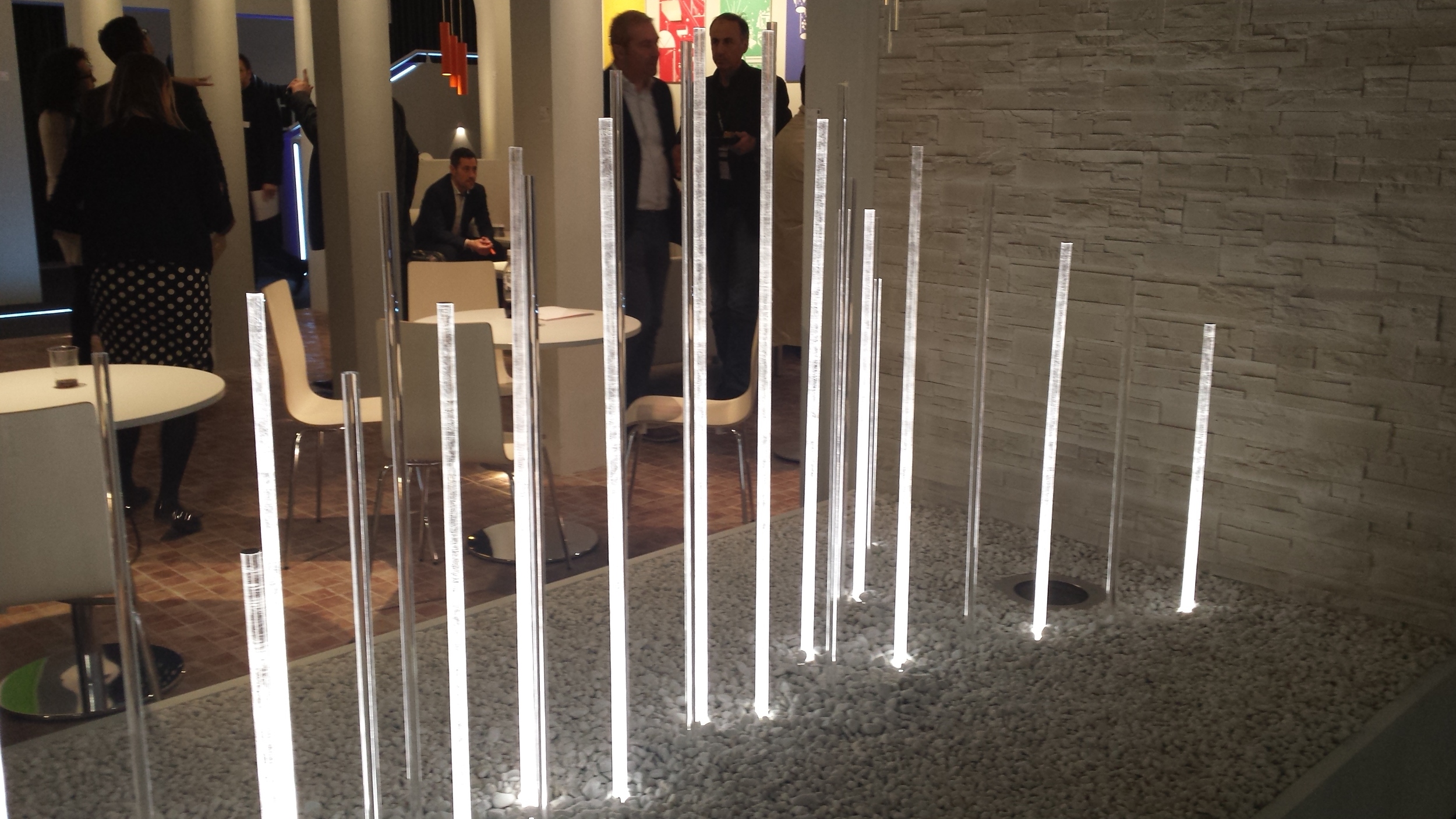
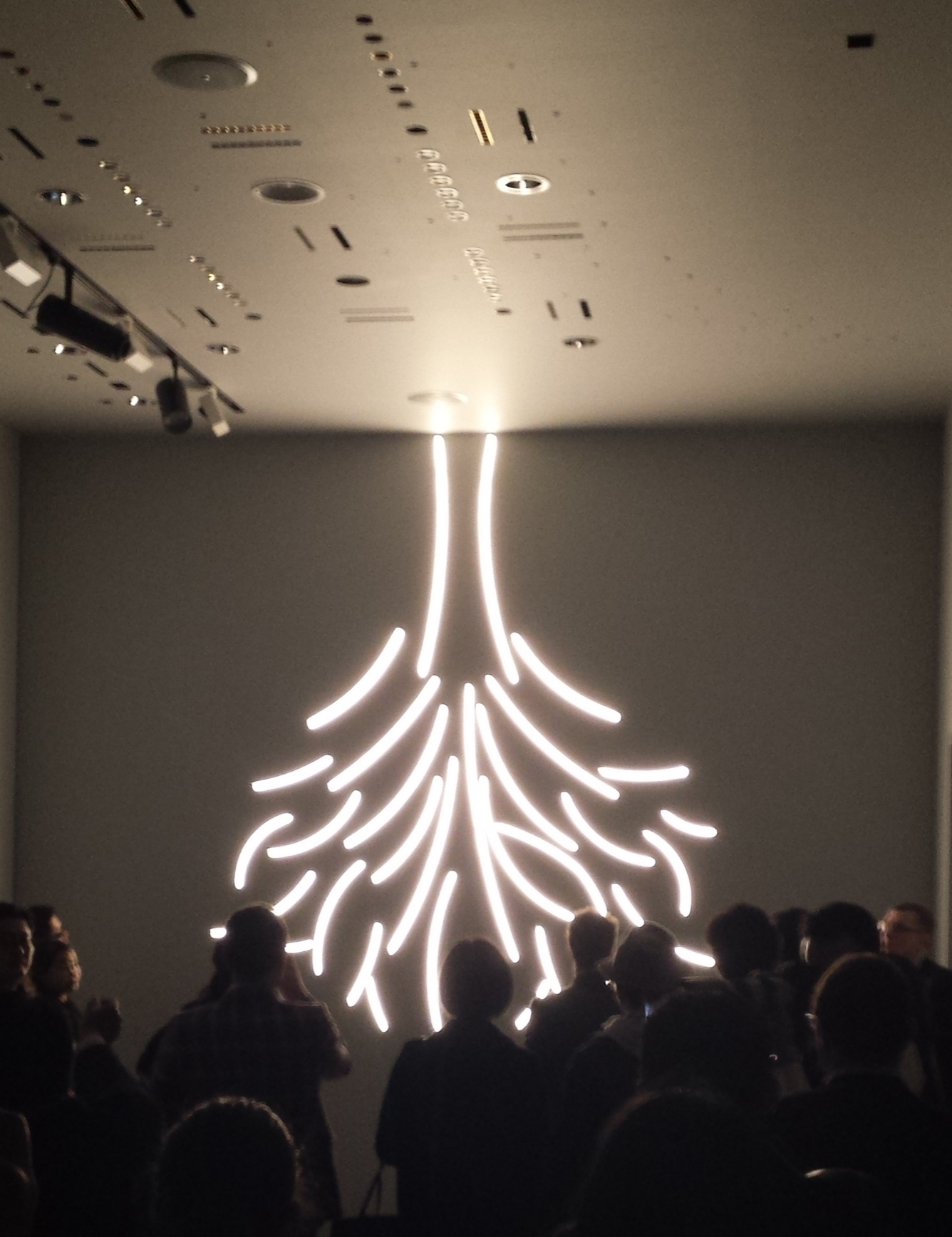
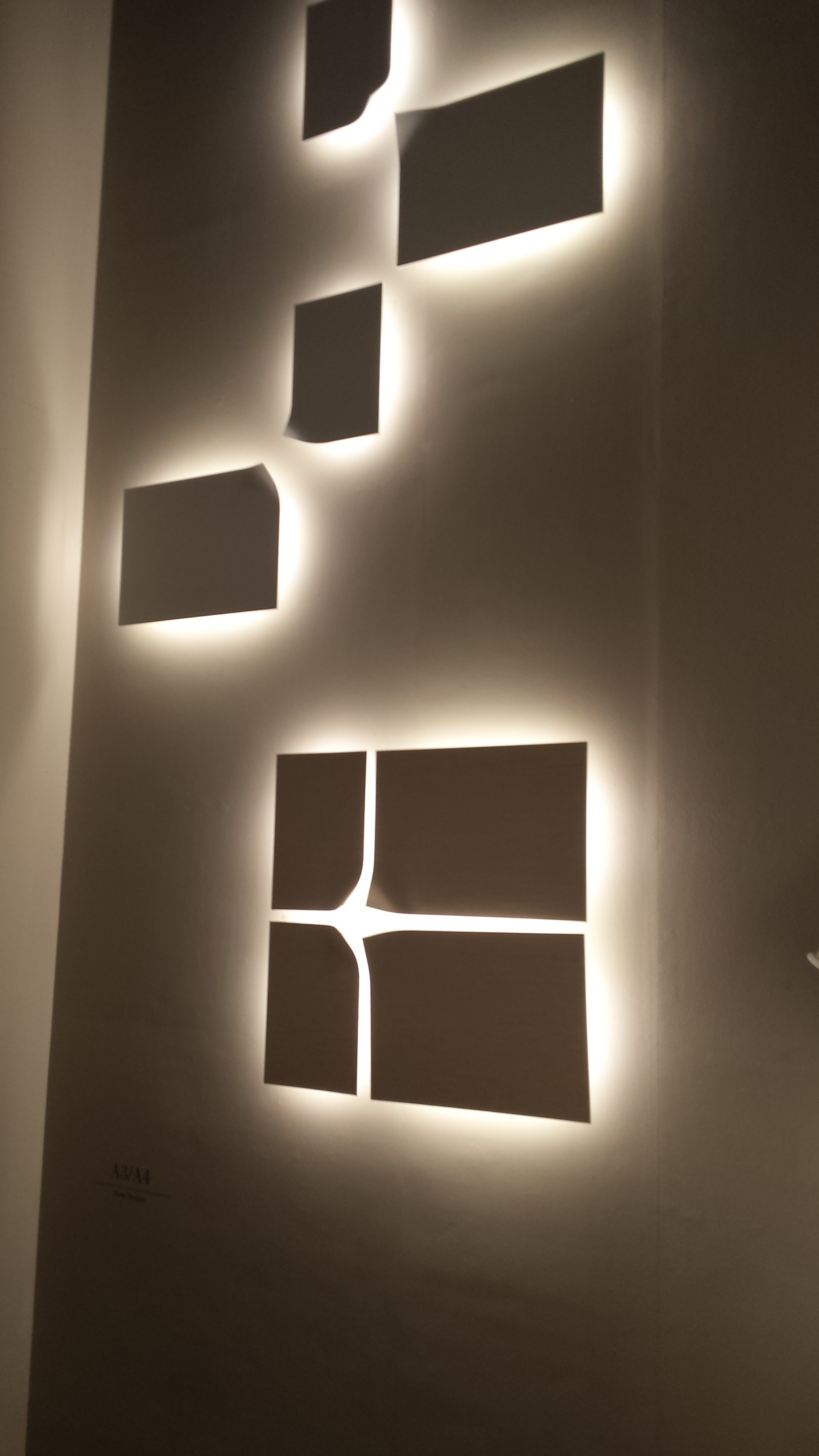

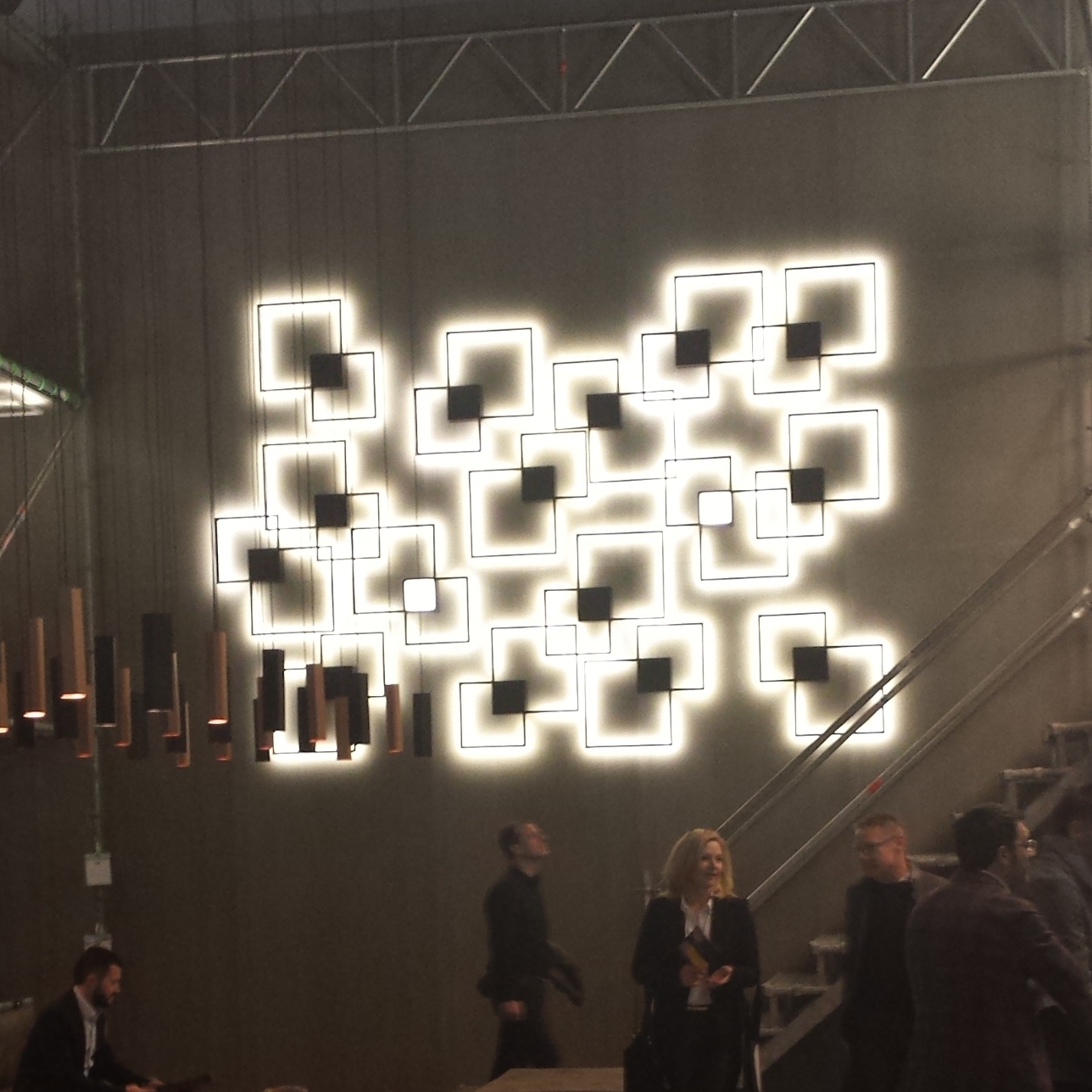
Dim to Warm
This year there was a big push for dim to warm fittings. Colour temperature, sometimes known as colour tuning, lighting has been around for a long time, with fluorescents been used before LEDs. While the principle of the idea of having the ability to change the colour of the white from warm to cool is good, unfortunately the technology has just not been suitable, with both dimming and the colour range (usually 3000K-6500K) been inadequate for the areas that it is needed. it does seem that this is changing though. There were a number of fittings available with a better colour range (1800K-3000K) which work with conventional phase dimmers, including some retrofit lamps as well. While the quality varied, it is positive to see that progress is been made.
Final thoughts
It was a good show, and it is promising to see that the industry is making big strides to embracing the freedom that LEDs can provide product design. it is also good to see evolution in the types of light and fittings provided beyond the stale choices of linear LED strip in a variety of garish colours. I'll leave you with some other pictures of the show.
Best Promotion goes to Prolicht, which had a custom bag factory on site. Really ingenious and their stand had queues all week. Not sure how much people saw of actual products, but they will definitely remember the name.
External floor lamps giving a soft glow of light
A selection of asymetrical wall lamps both with and without reading lights.
One of the more interesting stand displays
A selection of decorative fittings










